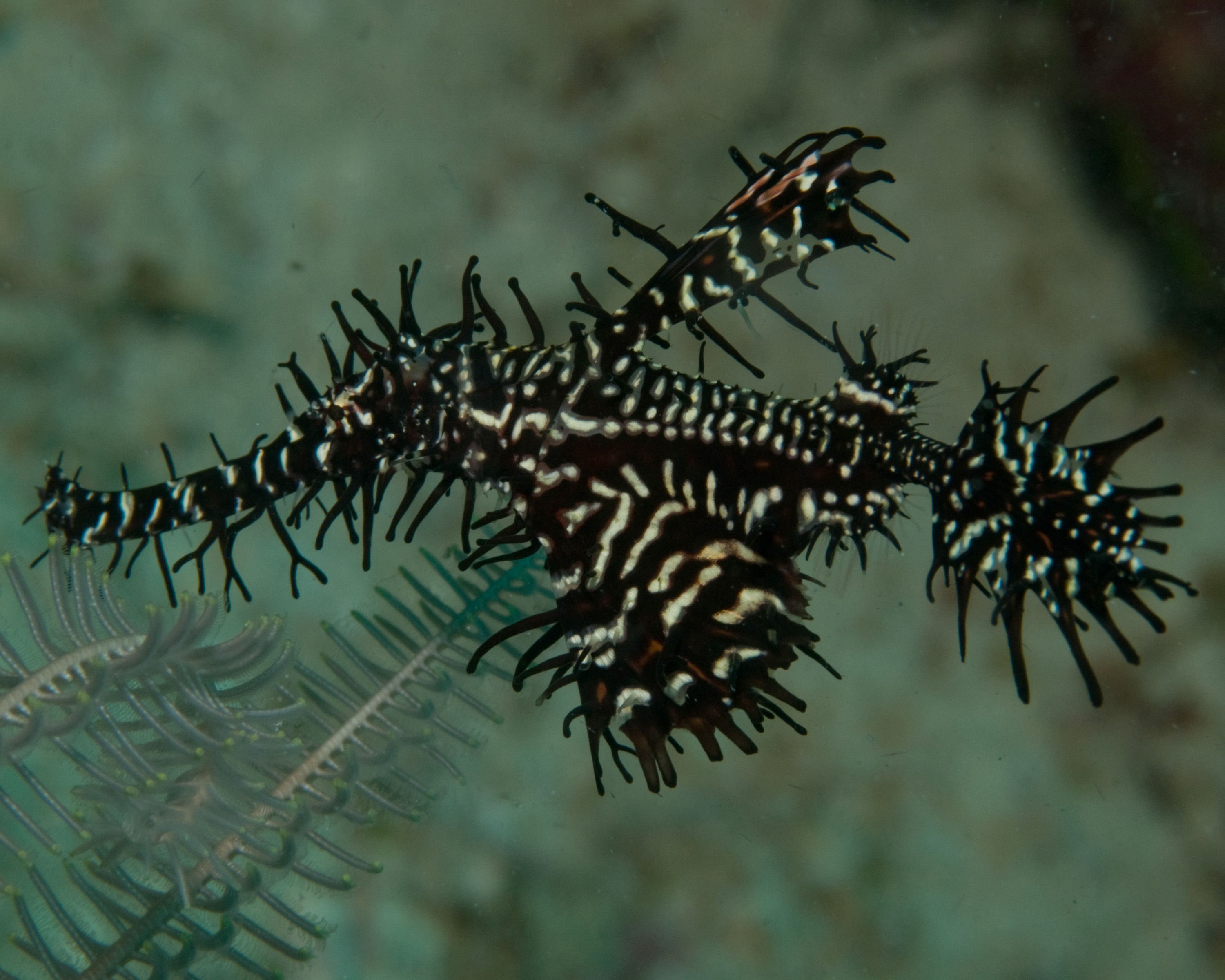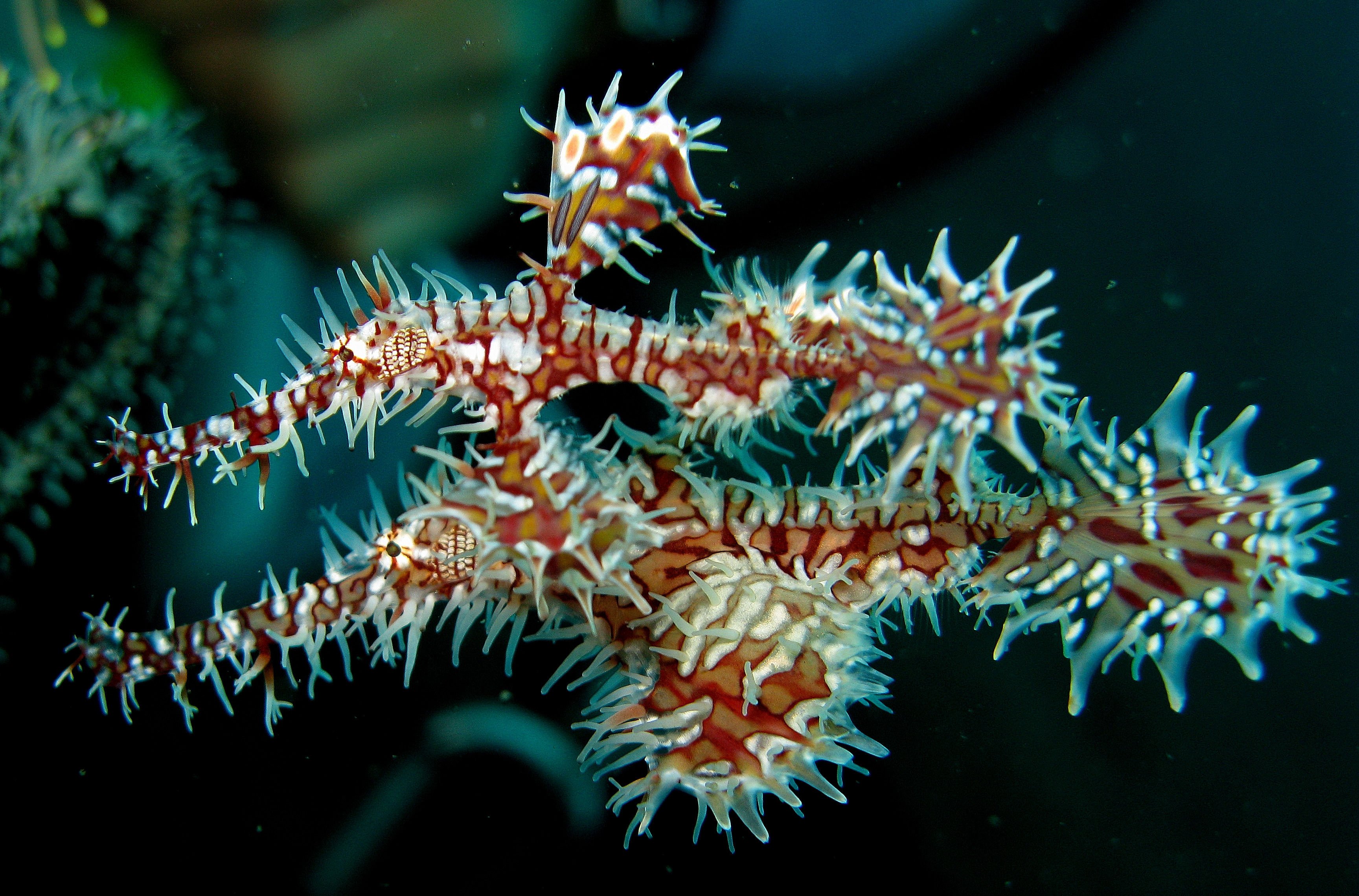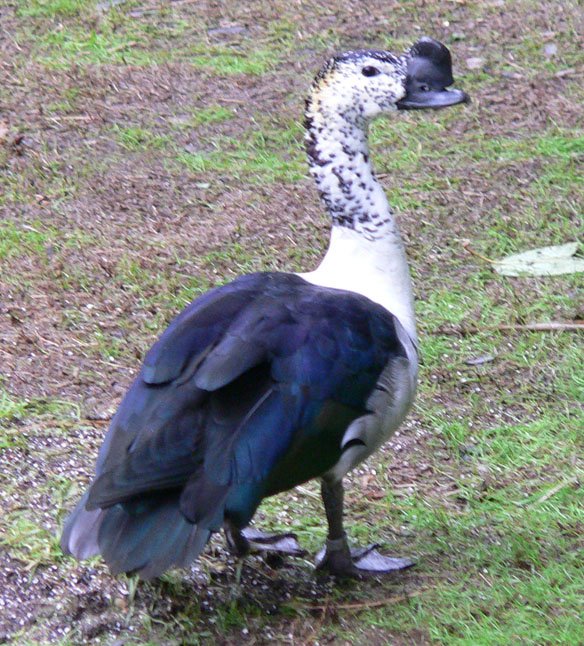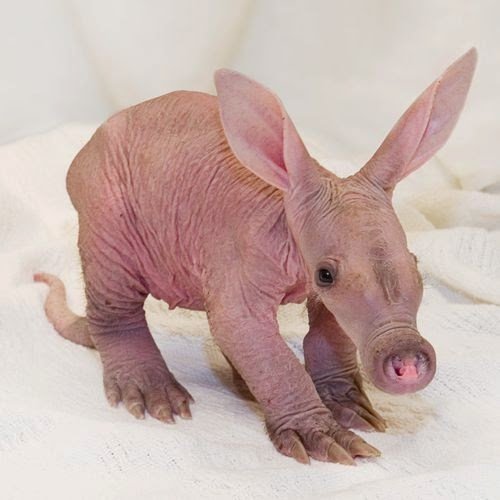Welcome to another post of my strange animals series where you get to meet some of the weirdest, coolest, and craziest animals in the world.
As you may have noticed I love to post about weird animals! Needless to say, I am always on the look out for new ones that I have never heard of before. So, today I would like to present you with 4 strange animals that I discovered the last week. They really intrigued me and I hope the same applies to you:
1# Ornate Ghost Pipefish
 (credit)
(credit)
The first and definitely the weirdest looking one on today's list. Also known as the harlequin ghost pipefish and scientifically described as Solenostomus paradoxus, this a false pipefish of the family Solenostomidae. The species name is derived from the greek work "παράδοξος", meaning paradoxical and clearly refers to its' weird appearance.
The species occurs in the Western Pacific and the Indian Ocean along reef edges, with adults reaching a maximum length of 12 cm. Although they are relatively common, these guys are difficult to spot as they are masters of camouflage!
Interestingly, there is no "color representative of S. paradoxus. Typical color patterns include dark red with yellow and orange splotches and yellow with lighter spots." [2]
 (credit)
(credit)
2# Townsend's big eared bat
 (credit)
(credit)
The second animal on the list is the Townsend's big eared bat, best known for its extremely long and flexible ears. Scientifically described as Corynorhinus townsendii, this little guy occurs in Canada, Mexico, and United States.
Like most bats it's insectivorous, feeding mainly on moths and also flies, beetles, sawflies, and other small insects.
And here's another cool fact I didn't know. This is a whisper bat! If you are like me and not familiar with the term, it means that this bat echolocates using sounds of much lower intensity than other "regular" bats do. One reason for this could be its diet. Many moths, which are its primary prey, have the ability to hear bats and produce their own noises to 'jam' a bat's echolocation! Wait, I didn't know that too! I guess that makes it two cool facts! You can thank me later!
And here's a freakisngly cute video before moving to the next animal:
3# The knob-billed duck

(credit)
The third weird animal of the day is the Knob-billed duck, which I guess looks weird in an ugly kind of way! Like most birds, it's sexually dimorphic, only the guys look weird. The ladies look much like any other duck:
 (credit)
(credit)
Scientifically described as Sarkidiornis melanotos, and also known as the African comb duck, this duck occurs in tropical wetlands of Sub-Saharan Africa, Madagascar and south Asia from Pakistan to Laos and extreme southern China.
It is one of the largest species of duck, with the length of adults ranging between 56 to 76 cm, their wingspan from 116 to 145 cm and their weight from 1.03 to 2.9 kg. Obviously, the males of the species are easily distinguished by the large black knob on the bill.
4# Numbat
Scientifically described as Myrmecobius fasciatus, the numbat comes by with many names including banded anteater, marsupial anteater and walpurti. You maybe thinking that this little guy is actually very cute, what's so weird about it? This:
The numbat is a marsupial native to Western Australia that feeds almost exclusively on termites, which explains its long tongue in case you were wondering!
Numbat is a small, colourful creature with adults ranging from 35 to 45 cm and their weight varies between 280 and 700 g.
The End
So that's with the strange animals for today. Didn't have enough? Ok, here's a baby Aardvark:

Credit: Mark M. Gaskill – Phoenix Innovate. Photo taken at the Detroit Zoo
More Strange Animals
If you enjoyed reading about this strange creature make sure to check some of my latest posts. I am sure you will love them:
- Halloween Special: A Real-Life Monster Compilation
- Alien-Like Moth With Tentacles Terrifies The Internet - But Is This Creature Real?
- This Hummingbird Is Just So Weird! Can You Guess Why?
- This Deep Sea Creature Looks Like An Alien Spaceship
- World's Largest Millipede VS Smallest Millipede
- The Weird Looking Cantor's Giant Softshell Turtle
- 7 Horrifying Micro-Monsters That Will Haunt Your Dreams
References & Further Reading
- https://en.wikipedia.org/wiki/Solenostomus_paradoxus
- http://eol.org/pages/205011/details
- https://en.wikipedia.org/wiki/Townsend%27s_big-eared_bat
- https://en.wikipedia.org/wiki/Knob-billed_duck
- https://en.wikipedia.org/wiki/Numbat
 Steemstem & SteemitEducation
Steemstem & SteemitEducation
Steemstem is the go-to place for science on Steemit. Check it out at @steemstem or visit the #steemSTEM channel. A big thank you also goes to the guys from @steemiteducation for supporting my content!
Greek Community
A final big thanks goes to my fellow greeks for their support and love. Follow the greek-trail or check the facebook page for more greek content!



